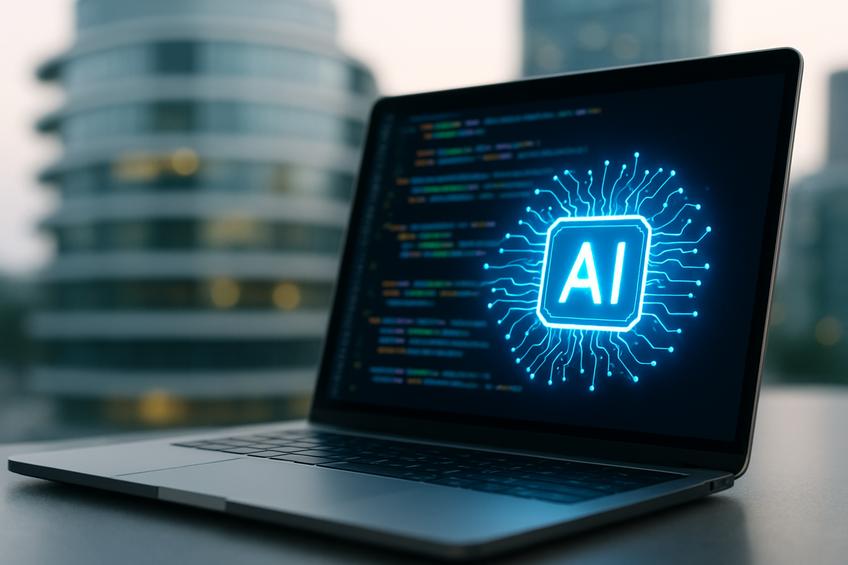Generative AI in Software Development
Generative AI refers to a category of artificial intelligence technologies capable of creating new content, such as code, text, images, or designs, by learning patterns from existing data. In software development, generative AI is starting to transform workflows by automating repetitive coding tasks, generating code snippets, debugging, and even assisting in complex design decisions. This shift not only accelerates development cycles but also enhances accuracy and innovation by allowing developers to focus more on creative problem-solving according to Moveworks.
Streamlining Development Processes
AI-powered tools can streamline software development processes by integrating intelligent automation into various stages—from planning and coding to testing and deployment. These technologies enable faster prototyping, real-time code completion, and automated testing, reducing manual effort and operational costs. Their adaptability also supports team collaboration and continuous integration, leading to more consistent and reliable software delivery.
As a result, generative AI marks a significant evolution in software development workflows, empowering developers to build higher-quality applications more efficiently while reshaping traditional programming paradigms.
Boosting Developer Productivity
Generative AI tools significantly enhance developer productivity by minimizing interruptions and allowing a deeper focus on coding and problem-solving. Traditional development workflows often suffer from frequent task-switching and cognitive disruptions, which can degrade performance and extend project timelines. Generative AI assists by automating routine tasks such as code generation, bug detection, and providing context-aware suggestions, thereby reducing the need for developers to pause and search for solutions externally explained in recent human factors research.
This streamlined workflow reduces cognitive load and task interruptions, helping developers maintain prolonged concentration and creative problem-solving capabilities. By handling repetitive or complex coding tasks efficiently, these AI tools enable developers to focus more on critical thinking and architecting robust software solutions. However, balancing AI assistance with developer control is essential to avoid over-reliance or workflow interruptions caused by AI-generated suggestions.
Transforming the Software Development Lifecycle (SDLC)
The integration of artificial intelligence (AI) into the traditional software development lifecycle (SDLC) is ushering in transformative changes that compel organizations to modernize their development methodologies. AI-driven automation enhances various SDLC stages, from requirements gathering and design to coding, testing, and deployment, resulting in faster, more efficient workflows with improved consistency and quality. For example, generative AI tools can automate code generation and assist in debugging, significantly reducing development time and human error.
This shift demands that enterprises adopt AI-infused procedures tailored to each phase of the SDLC, fostering agility and scalability. Moreover, AI integration strengthens security by automating vulnerability detection and response as part of continuous integration and deployment pipelines according to AWS.
Case Studies in Generative AI Integration
Leading technology companies have successfully integrated generative AI into their development workflows, demonstrating significant improvements in software delivery speed and quality. For example, Netflix applies generative AI across the entire software development lifecycle—from early discovery and requirements gathering to planning, design, testing, deployment, and maintenance. This holistic adoption not only accelerates coding but also requires corresponding acceleration in code review, integration, and release processes to prevent bottlenecks.
Another practical example is the use of generative AI to automate code generation and testing, enabling developers to focus on higher-value tasks while reducing errors. Companies leverage AI to generate initial code drafts, validate logic through automated testing frameworks, and maintain codebases with AI-assisted refactoring, thus optimizing resource allocation and reducing time to market according to Bain & Company.
Continuous Innovation Through Generative AI
Generative AI is rapidly transforming how large organizations innovate and maintain competitive advantage through continuous innovation. Recent studies, such as a McKinsey survey, reveal that 65% of organizations have adopted generative AI, highlighting its growing importance across industries. However, the deployment of this technology at scale involves navigating key challenges, including addressing talent shortages, managing complex data environments, and integrating AI outputs into existing business workflows.
Successful deployment strategies emphasize a phased approach: starting with pilot projects, investing in workforce training, fostering cross-functional collaboration, and continuously evaluating AI outcomes against business objectives. Additionally, organizations are adopting robust data management frameworks and ethical guidelines to ensure responsible AI use and sustain innovation momentum in evolving markets as analyzed by Intersog.





